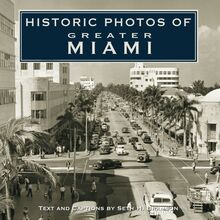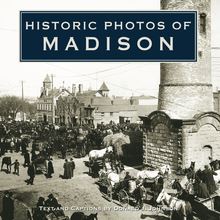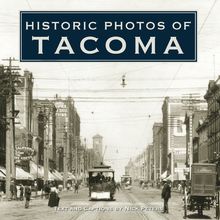Historic Photos of San Francisco Crime , livre ebook
134
pages
English
Ebooks
2009
Vous pourrez modifier la taille du texte de cet ouvrage
Obtenez un accès à la bibliothèque pour le consulter en ligne En savoir plus
Découvre YouScribe en t'inscrivant gratuitement
Découvre YouScribe en t'inscrivant gratuitement
134
pages
English
Ebooks
2009
Vous pourrez modifier la taille du texte de cet ouvrage
Obtenez un accès à la bibliothèque pour le consulter en ligne En savoir plus
Publié par
Date de parution
01 novembre 2009
Nombre de lectures
2
EAN13
9781618584267
Langue
English
Poids de l'ouvrage
14 Mo
Long after the gold rush had faded into history, San Francisco was still earning its title as the capital of the Wild, Wild West. Beneath its cosmopolitan, urbane veneer, the city at the dawn of the twentieth century still seethed with crime. Raucous crowds still gathered at the Old Barbary Coast dives and dance halls, hangouts for thieves and prostitutes, and by 1906, San Francisco’s elected officials had embarked on a spree of corruption that would eventually result in grand jury indictments, a kidnapping, bombings, and at least one murder.
With over 200 high-quality images, Historic Photos of San Francisco Crime sifts through the city’s misdeeds, murder, and mayhem, from the tongs and hatchet men of Old Chinatown to civil disobedience and protests at City Hall in the 1960s. The Preparedness Day Bombing of 1916, the trials of Roscoe "Fatty” Arbuckle for murder of Hollywood starlet Virginia Rappe, the lynching of the Howard Street Gang, the lethal Longshoremen’s strike and street riots of 1934, and the 1946 "Battle of Alcatraz” are just a few of the stops along the route of this riveting tour of San Francisco’s underworld.
Publié par
Date de parution
01 novembre 2009
Nombre de lectures
2
EAN13
9781618584267
Langue
English
Poids de l'ouvrage
14 Mo
HISTORIC PHOTOS OF
SAN FRANCISCO CRIME
T EXT AND C APTIONS BY H ANNAH C LAYBORN
Members of the San Francisco Police Department strut their stuff during the annual review of 1900. The San Francisco Police Department had much to be proud of. By the turn of the century, San Franciscans felt safe in their city, assured that vigilante raids and hoodlum riots were things of the past. Yet while Police Chief William P. Sullivan was warning his force to stop wasting duty time dyeing their hair and whiskers, girls as young as 14 were being fed into sordid cribs and brothels, and hapless sailors were still being fleeced and shanghaied regularly at dance halls and waterfront dives. Opium use was rampant not only in Chinatown, but also in a growing number of white middle-class homes. Some would soon call the police department rotten to the core.
HISTORIC PHOTOS OF
SAN FRANCISCO CRIME
Turner Publishing Company
200 4th Avenue North Suite 950
Nashville, Tennessee 37219
(615) 255-2665
www.turnerpublishing.com
Historic Photos of San Francisco Crime
Copyright 2009 Turner Publishing Company
All rights reserved.
This book or any part thereof may not be reproduced or transmitted in any form or by any means, electronic or mechanical, including photocopying, recording, or by any information storage and retrieval system, without permission in writing from the publisher.
Library of Congress Control Number: 2009922656
ISBN: 978-1-59652-534-4
Printed in China
09 10 11 12 13 14 15 16-0 9 8 7 6 5 4 3 2 1
C ONTENTS
A CKNOWLEDGMENTS
P REFACE
A B ARBARY C OAST H ANGOVER (1890-1909)
O LD H ABITS D IE H ARD (1910-1919)
F ALLING S TARS AND P ENNY-ANTE G ANGSTERS (1920-1929)
R AW D EALS AND A N EW D EAL (1930-1939)
T HE W AR AT H OME (1940-1949)
F AMILY M ATTERS AND THE E ND OF AN E RA (1950-1960)
N OTES ON THE P HOTOGRAPHS
Two bound prisoners wait with an official at the iron gate of San Quentin s dungeon, built in the mid-1850s and used for solitary confinement punishment for 80 years. Originally intended to house 45 prisoners, the dungeon may be California s oldest surviving public work, built out of local rock and brick quarried by convicts. Because of the date and the unusual pairing of the inmates shown here, these prisoners may be Louis Dabner and John Seimson, known as the Gas Pipe Thugs, responsible for four murders and several assaults and robberies between August and November of 1906. Seimson was a full-blood Hawaiian, 28 at the time of his execution. Dabner, who listed his occupation as playboy, was 16 when arrested and 18 when executed. According to author William J. Duffy, their execution by hanging at San Quentin on July 31, 1908, drew record crowds as the first double execution in state history.
A CKNOWLEDGMENTS
This volume, Historic Photos of San Francisco Crime , is the result of the cooperation and effort of many individuals, organizations, and corporations. It is with great thanks that we acknowledge the valuable contribution of the following for their generous support:
The Bancroft Library, University of California, Berkeley
The California History Room, California State Library, Sacramento, California
Library of Congress
Novato History Museum
San Francisco History Center, San Francisco Public Library
The Virtual Museum of the City of San Francisco, www.sfmuseum.org
This book is dedicated to the legion of pretty waiter girls who were forced to make a living for themselves in one of the most heartless and depraved places on earth, the Old Barbary Coast in San Francisco.
This book is also dedicated to Jesse B. Cook (1860-1938), Officer, Chief of Police, and Police Commissioner serving the San Francisco Police Department from the late 1880s to the 1930s. His intelligence and sympathy for unfortunates, even criminals, was evident. He was an honest cop in an era when many were not, and his love of the police department, San Francisco, and California history led him to record and collect much of the information and many of the images in this book.
------
With the exception of touching up imperfections that have accrued with the passage of time and cropping where necessary, no changes have been made to the photographs. The focus and clarity of many photographs is limited by the technology and the ability of the photographer at the time they were taken.
P REFACE
The crimes of San Francisco s early history-the hotheaded lynchings, Committee of Vigilance uprisings, and the exploits of Black Bart-tend to overshadow the half century of fascinating crime that followed, which is the subject of this book. Some early dens of iniquity, gambling parlors, saloons, and dance halls of the Barbary Coast remained constant in both eras, even resurrecting themselves after a cataclysmic earthquake and fire in 1906. They would thrive until the illicit activities that sustained them-robbery, prostitution, and gambling-were driven farther underground in 1917.
The Hoodlums of San Francisco s waterfront and the tongs of Chinatown were notable criminal consortiums of the nineteenth century, two cultural sides of one coin minted on the violent streets of San Francisco in the late 1860s. A reporter for the San Francisco Times in the 1860s offered this explanation of the term Hoodlum to the readers of the Los Angeles Express on August 25, 1877:
A gang of bad boys from fourteen to nineteen years of age were associated for the purpose of stealing. These boys had a rendezvous, and when danger threatened them their words of warning were, Huddle, em! Huddle em! An article headed Huddle Em, describing the gang and their plans of operation, was published in the San Francisco Times. The name applied to them was soon contracted to hoodlum .
According to author Herbert Asbury, an eyewitness claimed that huddle em was not a warning cry, but a cue for gang action to surround a likely victim for mauling and robbery. By 1868, these boys, along with an occasional girl, operated from an abandoned shack on an old wharf with an entrance underneath, and were already credited with scores of robberies. Over a generation, as younger boys followed their lead, the Hoodlums became something of an institution. One defining feature of the Hoodlum was his uniform hatred of the Chinese, an indication that his background was working-class Irish. Hoodlums made belts and cap tassels out of queues they cut from the heads of Chinese men, beat and mutilated them for no particular reason, and set fire to their washhouses and shops. This pastime climaxed in the riot of July 24, 1877, when several hundred hoodlums burned and wrecked Chinese businesses, attacking every Chinese immigrant unlucky enough to cross their path.
Some authors claim that there was a model in China for the violent San Francisco tongs, a word that simply means association. Others think the tongs were as American as chop suey. The mother of all American tongs, the Chee Kung tong, originally accepted all those who could not join the existing Chinese benevolent associations that were based on family name or birthplace. The Chee Kung, therefore, was an association of disenfranchised young men, much like the Irish street urchins, who first banded together for protection, but soon mimicked the violence, robbery, and extortion that surrounded them. Each group filtered that violence through its own cultural traditions.
The feared hatchet men or highbinders of Chinatown were hired killers who first concealed their weapons in fabric wound high about their waists. In those early days they left a sharpened lather s cleaver in the skull of their victim, but later adopted modern weapons. While Hoodlums as a specific group dissipated in one generation, the tongs increased in number and power. According to a February 13, 1886, account in Harper s Weekly , the Chee Kung tong had 4,500 members in San Francisco, and 15,000 throughout America in 390 branches. They enjoyed luxurious headquarters in a three-story building on Spofford Alley. Law-abiding Chinese could not resist the demands of such a powerful organization, able to seek them out wherever they might flee. By the turn of the century, there were at least 30 tongs directing their violence largely upon each other while competing for gambling, opium, and prostitution (slave girl) revenue.
According to San Francisco Police Department Commissioner Jesse B. Cook, one of the most famous tong kingpins of the nineteenth century, Little Pete, copied his extortion techniques from the Hoodlums who periodically raided Chinatown, demanding tribute money from storeowners. Born Fung Jing Toy in China around 1864, Little Pete immigrated to the United States with his family at the age of five. Watching, learning, and probably suffering from the worst of the Hoodlum raids in his youth, Little Pete ascended the ladder of the tong underworld swiftly. As a young man in his twenties, he stalked the streets of Chinatown wearing a steel-reinforced hat and chain mail, and was considered invincible until murdered by a rival in 1897. That execution lit the fuse of the twentieth-century tong wars.
And what became of the Hoodlums, those beastie boys of the Barbary Coast who disappeared from the headlines in the mid-1890s? If they survived their youth, they would likely have ended up in one of two places depending on their choices and character: San Quentin Prison or the San Francisco Police Department, which was, without a doubt, the toughest gang in town. As the curtain rose on the new century, the scene was a different tale of two cities, San Francisco and within it the impenetrable cultural kernel of Chinatown, the only neighborhood not ruled by the SFPD.
- Hannah Clayborn
The Cobweb Palace was a saloon built by Abraham Warner in 1856 on the northwest corner of Meigg s Wharf and Francisco Street (now Fisherman s Wharf). Unlike Barbary Coast criminal hangouts such as the Cowboy s Rest and the Whale on Pacific Street, this North Beach survivor catered to respe














